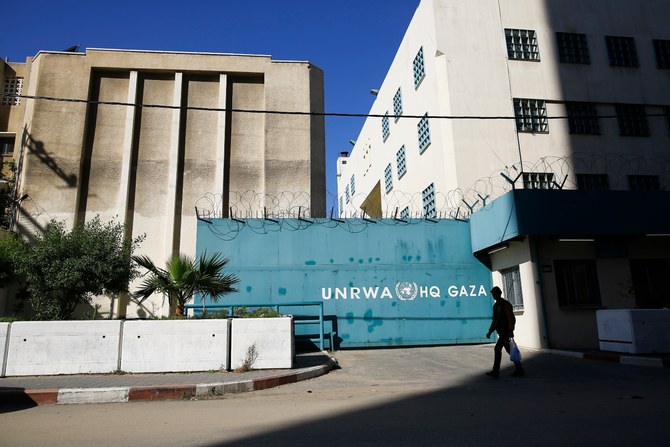
The UN High Commissioner for Refugees (UNHCR) recorded a total of 68.5 million forcibly displaced people worldwide in 2017, the highest number in decades. This figure included 25.4 million refugees, or 2.9 million more than in 2016, representing the largest-ever annual increase.
Contrary to popular perceptions in the Global North, 85 percent of these refugees are in developing countries, and four out of five remain in states that neighbor their own, according to UNHCR. This has prompted international efforts to promote a more equitable sharing of responsibility toward refugees, and to provide financial and other resources to developing countries that host them.
The UN General Assembly’s affirmation last December of a Global Compact on Refugees, with its much-needed call for shared responsibility for hosting refugees, marked a step in the right direction. But the compact is not legally binding and has no enforcement mechanism. This raises questions as to whether it can influence national governments and have any impact in addressing the growing global refugee crisis, especially given increasing worldwide hostility to accepting refugees.
Africa is one of the regions most affected, not least because two of the biggest causes of forcible displacement in 2017 were the crisis in the Democratic Republic of the Congo and the war in South Sudan. In an attempt to address this, the African Union has made 2019 the Year of Refugees, Returnees, and Internally Displaced Persons. This was the theme of this week’s AU summit in Addis Ababa.
Despite some encouraging signs of progress on the ground, three factors complicate refugee management in Africa. For starters, African countries typically lack the financial and technical resources to host large numbers of refugees. Many governments struggle to provide refugee communities with basic social services, such as health care and education. Broader constraints related to housing, sanitation and transport infrastructure further reduce refugees’ standard of living.
In addition, social tensions can hinder or prevent the integration of refugees and may lead to violence against them. This happened in South Africa, for example, after local politicians made refugees and migrants scapegoats for poor service delivery and a lack of jobs. More generally, many African states do not take a human rights approach toward refugee management within their borders and often maintain an encampment system for refugees.
The third problem stems from cumbersome national regulatory processes. In many African countries, a lack of staff and funding can lead to lengthy delays in processing asylum claims. This can result in several generations growing up in refugee camps such as the Dadaab camp in Kenya, extending their statelessness indefinitely. And, because few African countries have provided for the naturalization of long-term refugees, these communities are trapped in a protracted state of limbo without rights or protection.
But establishing a rights-based refugee management framework in Africa is not a lost cause.
One international initiative is the Comprehensive Refugee Response Framework (CRRF), which is being implemented under the UN’s new Global Compact in selected pilot countries, seven of which are in Africa. This gives donors, the UN, the AU, and the World Bank the chance to develop joint approaches that ease pressure on host countries, make refugees more self-reliant, expand their resettlement in host countries, and support conditions for their safe and dignified return to their countries of origin. Importantly in this regard, the World Bank is providing $2 billion to support low-income countries hosting refugees.
Rather than just revising its existing migration and refugee policies, the AU must provide concrete solutions for improving refugee management on the continent.
Asmita Parshotam
Good examples have emerged from Africa, too. At the start of this decade, Tanzania finally decided to naturalize tens of thousands of Burundian refugees who had fled there in 1972. More recently, the “Uganda model” has received international praise for allowing refugees to work, cultivate land and move freely throughout the country. Refugees in Uganda are also entitled to state health care and primary education. Of course, implementing these policies is a massive undertaking, owing to constraints on the availability of financial and technical resources, and establishing social cohesion between locals and refugees remains a challenge.
In Kenya, meanwhile, the World Bank and UNHCR, together with government authorities, established the Kalobeyei Integrated Social and Economic Development Programme (KISEDP) under the CRRF in 2015. KISEDP aims to invest in projects for refugees and their host communities that focus on basic infrastructure and agriculture. Like the Uganda model, however, KISEDP faces political and resource constraints, such as the Kenyan government’s limited capacity to manage refugee populations, a lack of inputs for agricultural projects, and insufficient funding for refugees to implement self-reliance schemes.
There is no shortage of ideas or policy frameworks for developing a rights-based refugee management system in Africa. But only sustained political will can turn vision into reality. Rather than just revising its existing migration and refugee policies, the AU must provide concrete solutions for improving refugee management on the continent. African governments, meanwhile, must make specific commitments to reform their policies toward refugees with the help of donors and international organizations.
Furthermore, the AU, together with national governments, must address the root causes of refugee crises. This involves working to end civil wars and implement crisis prevention, boost economic growth and provide jobs, better integrate refugees into local communities, and deepen regional integration. Without such commitment, the AU’s theme for 2019 will accomplish little.
Asmita Parshotam is an admitted attorney of the High Court of South Africa and a researcher in the Economic Diplomacy Programme at the South African Institute of International Affairs (SAIIA). Copyright: Project Syndicate, 2019.










